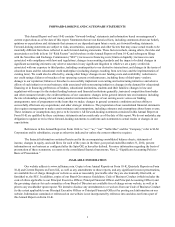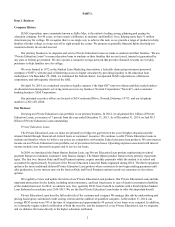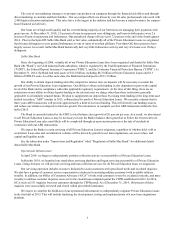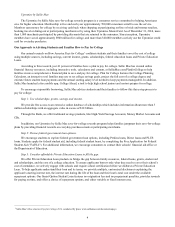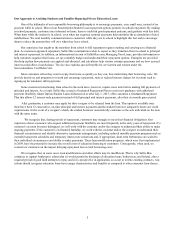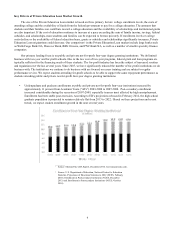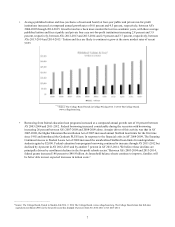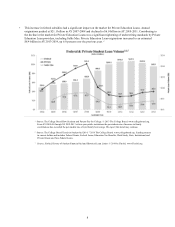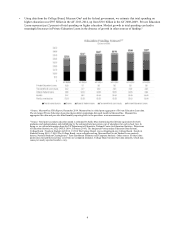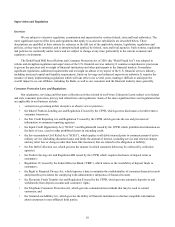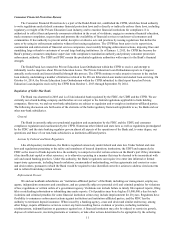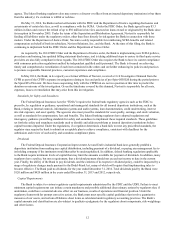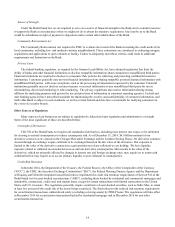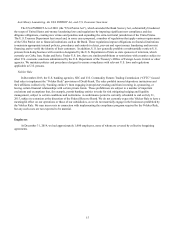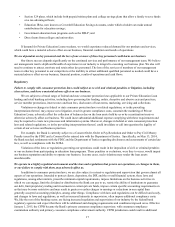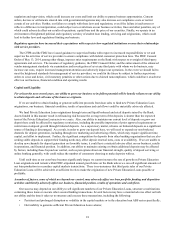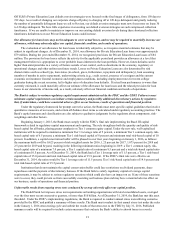Sallie Mae 2014 Annual Report Download - page 13
Download and view the complete annual report
Please find page 13 of the 2014 Sallie Mae annual report below. You can navigate through the pages in the report by either clicking on the pages listed below, or by using the keyword search tool below to find specific information within the annual report.Consumer Financial Protection Bureau
The Consumer Financial Protection Act, a part of the Dodd-Frank Act, established the CFPB, which has broad authority
to write regulations under federal consumer financial protection laws and to directly or indirectly enforce those laws, including
regulatory oversight of the Private Education Loan industry, and to examine financial institutions for compliance. It is
authorized to collect fines and provide consumer restitution in the event of violations, engage in consumer financial education,
track consumer complaints, request data and promote the availability of financial services to underserved consumers and
communities. It has authority to prevent unfair, deceptive or abusive acts and practices by issuing regulations that define the
same or by using its enforcement authority without first issuing regulations. The CFPB has been active in its supervision,
examination and enforcement of financial services companies, most notably bringing enforcement actions, imposing fines and
mandating large refunds to customers of several large banking institutions. As of January 1, 2015, the CFPB has become the
Bank’s primary consumer compliance supervisor with compliance examination authority and primary consumer protection
enforcement authority. The UDFI and FDIC remain the prudential regulatory authorities with respect to the Bank’s financial
strength.
The Dodd-Frank Act created the Private Education Loan Ombudsman within the CFPB to receive and attempt to
informally resolve inquiries about Private Education Loans. The Private Education Loan Ombudsman reports to Congress
annually on the trends and issues identified through this process. The CFPB continues to take an active interest in the student
loan industry, undertaking a number of initiatives related to the Private Education Loan market and student loan servicing. On
October 16, 2014, the Private Education Loan Ombudsman within the CFPB submitted its third report based on Private
Education Loan inquiries received by the CFPB from October 1, 2013 through September 30, 2014.
Regulation of Sallie Mae Bank
The Bank was chartered in 2005 and is a Utah industrial bank regulated by the FDIC, the UDFI and the CFPB. We are
currently not a bank holding company and therefore are not subject to the federal regulations applicable to bank holding
companies. However, we and our non-bank subsidiaries are subject to regulation and oversight as institution-affiliated parties.
The following discussion sets forth some of the elements of the bank regulatory framework applicable to us, the Bank and our
other non-bank subsidiaries.
General
The Bank is currently subject to prudential regulation and examination by the FDIC and the UDFI, and consumer
compliance regulation and examination by the CFPB. Numerous other federal and state laws as well as regulations promulgated
by the FDIC and the state banking regulator govern almost all aspects of the operations of the Bank and, to some degree, our
operations and those of our non-bank subsidiaries as institution-affiliated parties.
Actions by Federal and State Regulators
Like all depository institutions, the Bank is regulated extensively under federal and state law. Under federal and state
laws and regulations pertaining to the safety and soundness of insured depository institutions, the UDFI and separately the
FDIC as the insurer of bank deposits have the authority to compel or restrict certain actions on the Bank’s part if they determine
it has insufficient capital or other resources, or is otherwise operating in a manner that may be deemed to be inconsistent with
safe and sound banking practices. Under this authority, the Bank’s regulators can require it to enter into informal or formal
supervisory agreements, including board resolutions, memoranda of understanding, written agreements and consent or cease
and desist orders, pursuant to which the Bank would be required to take identified corrective actions to address cited concerns
and to refrain from taking certain actions.
Enforcement Powers
We and our nonbank subsidiaries are “institution-affiliated parties” of the Bank, including our management, employees,
agents, independent contractors and consultants, and are generally subject to potential civil and criminal penalties for violations
of law, regulations or written orders of a government agency. Violations can include failure to timely file required reports, filing
false or misleading information or submitting inaccurate reports. Civil penalties may be as high as $1,000,000 a day for such
violations and criminal penalties for some financial institution crimes may include imprisonment for 20 years. Regulators have
flexibility to commence enforcement actions against institutions and institution-affiliated parties, and the FDIC has the
authority to terminate deposit insurance. When issued by a banking agency, cease and desist and similar orders may, among
other things, require affirmative action to correct any harm resulting from a violation or practice, including restitution,
reimbursement, indemnifications or guarantees against loss. A financial institution may also be ordered to restrict its growth,
dispose of certain assets, rescind agreements or contracts, or take other actions determined to be appropriate by the ordering
11


